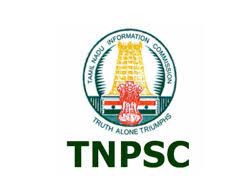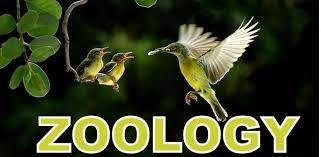TNPSC Zoology Exam Syllabus : Tamil Nadu Public Service Commission
Organisation : Tamil Nadu Public Service Commission (TNPSC)
Exam Name : TNPSC Zoology Examination
Standard : PG Degree Standard
Code : 271
Announcement : TNPSC Zoology Exam Syllabus
Website : https://www.tnpsc.gov.in/English/new_syllabus.html
TNPSC Zoology Exam Syllabus
UNIT I
Non-chordate: General Organization – classification upto class level, Modern taxonomy. Shelled Protozoans, Economic Importance, Fossil Protozoans and thier importance, Neuromotor system in ciliates. Origin of Metazoa – Theories and Evolution, Economic importance of Porifera, Polymorphism in Hydrozoa. Coral reefs – structure, formation and theories. Origin and evolution of Coelenterates. Origin and types of coelom in Bilateria. Effects of parasitism on the parasites and hosts in Helminthes and larval forms. Coelom and metamerism in Annelida, Mode of life in polychactes. Larval forms and parasitism in Crustacea. Adaptive radiation in Gastropods. Larval forms of Echinodermata and their Significance. Retrogressive Metamorphosis, Neotany and affinities of Ascidian.
Related / Similar Syllabus : TNPSC Wildlife Biology Exam Syllabus

UNIT II
Chordate: Migration in Fishes, Accessory respiration in fishes. Adaptation in deep sea fishes. Electric Organs and electro-receptors in fishes. Origin and evolution of Amphibia. Conquest of Land – Adaptations to live on land – evolutionary significance of crocodiles. Adaptive radiation in birds – Migration in Birds.
Evolution: Origin of life – Bio-chemical evolution – cultural evolution. Present status of Natural Selection. Adaptation and evolution in mammals. Wild life mammals in India and Conservation measures. Endanger species and current status. Wild life Act.
UNIT III
Cell and Molecular Biology: Cellular organization-Membrane, intercellular-structure and
function-cellular organelles. Chromosomes, types and Organization of genes. Cell
division, cell cycle and regulation. Cell communication and cell signaling. Structure of
DNA and RNA. Genetic code, Replication and protein synthesis.
Bio-Chemistry: Structure of carbohydrates, amino acids, proteins, lipids – Glycolysis
and Kreb’s cycle – oxidation, reduction – oxidative phosphorylation energy conservation
and release – cyclic AMP-ATP – saturated and unsaturated fatty acids – cholesterol –
enzymes, mechanism, action and kinetics. Vitamins, trace elements and micronutrients
and coenzymes. Antioxidant enzymes. Hormones-classification, biosynthesis and
functions.
UNIT IV
Bio-Physics: Microscopy-Principles of Phase, Electron Microscope, Polarising, Fluorescent, Interference Microscope. Photo – Electric Calorimetry, Freeze drying – freezing, Microtome, Fixation, staining techniques. X-ray – Diffraction, Ultra – Violet and infra red, Spectroscopy and Autoradiography.
Instrumentation methods: Centrifugation, Electrophoretic and Chromatographic techniques. PCR, DNA finger printing, RFLP, RAPD, AFLP, FISH and GISH.
UNIT V
Genetics: Gene concept, one Gene – one polypeptide – concept, Enzyme regulation – Operon concept – GAL and LAC – Operon System. Population Genetics – Hardy – Weinberg Law Genetic Equilibrium. Radiation Genetics – mechanisms of Chromosomal breakage – Mutagens and Mutagenesis – Carcinogens and carcinogenesis – Human Genetics. Karyotype – Variation in Karyotypes with special reference to syndromes, Genetic counseling. Genetic Engineering – Present Status and it uses. Human genome project.
UNIT VI
Bio-Statics: Collection of data. Primary and secondary – compiling and sampling methods – frequency distribution, frequency tables – diagrammatic representation – variables – measures of control tendency. Standard deviation, Standard error – Correlation, regression, regression analysis – student’s “t” test and chi-square test.
Bio-informatics: DNA and Protein sequence analysis, Prediction functional structure,
protein folding, Molecular docking, Metabolic and regulatory networks, General
challenges and applications.
SwissProt, NCBI: GENBANK, BLAST; Multiple Sequence Alignments.
UNIT VII
Physiology: With reference to mammals digestion, role of salivary gland liver, pancreas
and intestinal glands in digestion, nutrition, balanced diet in man-assimilation, intermediary metabolism. Composition of blood- coagulation – Transport of oxygen, carbon dioxide, blood pigments-mechanism of respiration. Muscles, mechanism of muscle contraction, temperature regulation, acid, base balance and homeostasis.
Nerve impulse conduction, neurotransmitters – receptors, photo, phono and chemo reception. Nephron and urine formation. Kidney stone formation. Comparison of excretion in fish, reptiles and mammals. Endocrine glands-testis, ovary and hypothalamo-hypophyseal gonadal relationship. Pheromones and reproduction. Biolumninescence, biological rhythms.

UNIT VIII
Immuno-Biology: Immune responses – Primary, Secondary and Theories. Immunity types – Innate – Acquired- cell mediated and Humoral immunity-Autoimmunity, Types of Antigens and immuno globulins. Vaccinations – ELISA, RIA Techniques.
Developmental Biology: Gametogenesis, Fertilization: Significance, polyspermy Gynogenesis, Androgenesis, Parthenogenesis, Polarity, Symmetry, Radiant, Embryonic fields, Differentiation – Nuclear and Chemical factors, Inductors and organisers, Genes and organizers, Regeneration – Polarity and Gradient in regeneration. ART. Stem cell biology-sources, types and applications.
UNIT IX
Resource Ecology and Management, Renewable and Non-Renewable natural
resources. Energy resources – conventional and non-conventional. Bioremediation.
Habitat ecology. Wild Life conservation, Management and Acts. Air, Water, Soil, Sound
pollutions. Laws related to Environment and Environmental Protection Act. Space
ecology and Radiation ecology. Climate changes and Global warming.
UNIT X
Economic Zoology: Parasitism and commensalism – protozoan parasites and diseases
– helminthes parasites and diseases on man and domestic animals; Beneficial and harmful insects – insect pests on crops and stored products. Control methods. Pheromones and IPM. Sericulture, apiculture, lac culture, sea weed culture, poultry, pisciculture and induced breeding. Shell fisheries – fin and shells. Aqua culture practices in Tamil Nadu and their impact on the environment and on agriculture.
Download Syllabus
Download Syllabus Link : http://www.syllabus.gen.in/uploads/pdf2022/2842-syllabus.pdf